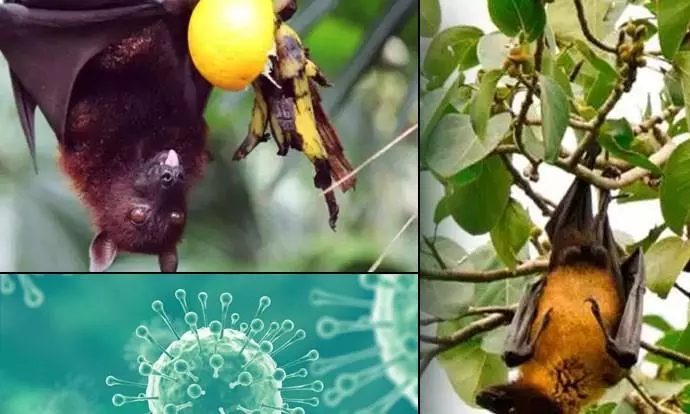
How did the deadly Nipah virus gets its name?
The deadly Nipah virus got its name from the village where it was first recorded in 1999. This was much before the WHO guidelines on naming infectious diseases was issued

The deadly Nipah virus, which has resurfaced in Kerala causing a lot of anxiety and concern, is a zoonotic virus transmitted through fruit bats or flying foxes.
It is considered dangerous because it can also cause encephalitis and seizures in severe cases, which can progress to coma within 24 to 48 hours. It has no treatment or vaccine available and the primary treatement for humans is supportive care.
According to the World Health Organisation, Nipah virus patients have a mortality rate of between 40 per cent and 75 per cent depending on the public health response to the virus. In fact, Nipah has been listed by the WHO — alongside Ebola, Zika and COVID-19 — as one of the several diseases that deserve priority research because of their potential to cause a global epidemic.
The origins of Nipah virus
So, what is the origin of the name of this dangerous virus? According to reports, the name 'Nipah' comes from a Malaysian village, Sungai Nipah, where the Nipah virus was first detected in 1999. At that time, when the outbreak happened there were more than 250 cases of febrile encephalitis among farm and abattoir workers. The Malaysian outbreak was primarily due to close contact with affected pigs.
Nearly 100 people died of this virus in Malaysia, which led to 1 million pigs being culled to try to contain the virus.
The virus spread to Singapore too at that time, with 11 cases and one death among slaughterhouse workers who had come into contact with pigs imported from Malaysia.
Since then, no further outbreaks have been reported in Malaysia and since then, the disease has mainly been recorded in Bangladesh and India. Both countries reported their first outbreak in 2001.
WHO guidelines for naming viruses
Decades after the Nipah virus was named after the Malaysian village where it was first reported, the WHO issued guidelines in 2015 on naming new human infectious diseases.
The WHO wanted to avoid negative impact on nations, economies and groups of people, and asked scientists, national authorities, the media and other stakeholders not to assign names to these infectious diseases that include geographic locations, or use people’s names or a particular animal or food.
The WHO had given examples such as the Middle East Respiratory Syndrome or MERS, which was named after the deadly virus that was first reported in Saudi Arabia in 2012. Other examples are the Spanish Flu, Rift Valley fever etc. Diseases have been named after people like Creutzfeldt-Jakob disease and Chagas disease, and after animals like swine flu, bird flu, monkey pox etc, said the WHO explaining why it identified a list of best practices.
These best practices were meant to minimise impact on trade, travel, tourism or animal welfare and avoid causing offence to any cultural, social, national, regional, professional or ethnic groups.
In fact, when WHO gave the coronavirus its official name as COVID-19, they were careful not to link it to a geographical location (like Wuhan). Moreover, the WHO Director-General Tedros Adhanom Ghebreyesus had said at that time: "Naming an illness is not as easy or as straightforward as it might appear... We had to find a name that did not refer to a geographical location, an animal, or an individual or group of people."
Nihap virus however got its name much before these guidelines came into force.

